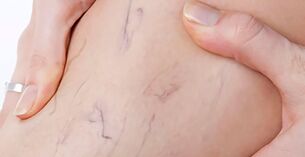
Small, protruding veins aren't scary yet, but think!
The early stages of the disease are characterized by mild symptoms. However, a woman who is mindful of her health should not notice the first signs of developing varicose veins:
- heavy in the legs at the end of the day;
- swelling of the legs;
- appearance of pigmentation on the skin of the lower leg and thinning of the skin;
- numbness of limbs, frequent leg muscle cramps;
- protrusion of veins on the surface of the skin;
- the appearance of a pattern of veins, spider veins on the leg.
If returning home after a day of work, a woman finds her feet in "tired" condition, she should not blame uncomfortable shoes or add "salt" to dinner. Swelling and heaviness in the legs are the first signs of the development of blood stasis in the vessels. Remember - varicose veins are difficult to treat. Early prevention and prompt medical attention can prevent or significantly slow varicose veins. Treatment should be started as soon as possible.
1st degree varicose veins
The main causes of varicose veins are considered to be pregnancy, excessive weight gain, prolonged physical activity, sedentary lifestyle, as well as genetic predisposition to the disease. Folk used to call varicose veins as "the disease of flight attendants" because the characteristic of this profession is long and long. This degree of disease is the mildest.
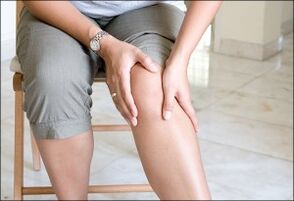
Categorizes diseases according to different factors. One of the classifications is according to the stage of the disease:
- 1st degree varicose veins or compensatory stage.
- Grade 2 varicose veins or compensatory stage.
- Grade 3 varicose veins or impaired stage.
Different stages of varicose veins have completely different treatments. You should not try to fight the illness on your own. This can only be harmful and lead to disastrous consequences. It is better to seek help from a qualified professional.
The first degree of varicose veins is characterized by swelling at night, spasms of convulsions at night. Often times, people confuse all these symptoms with common fatigue. However, already at this stage, preventive measures need to be taken, including warm-ups to improve overall blood flow, light foot massage, frequent swimming, and cycling.
Varicose veins in the early stages can also manifest as cramps in the calf area, patients often complain of feeling stretched legs or hot muscles. This is increasingly and often accompanied by pain in the lower extremities.
Already at this stage, you may notice visual manifestations of varicose veins, need to warn right away:
- Light purple skin.
- Spider veins first appear on different parts of the body, usually the legs.
- Winding veins can be seen.
First degree varicose veins are often manifested by such external changes.
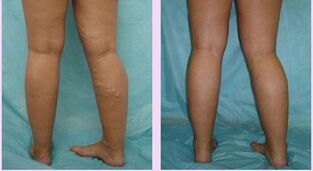
Another important factor in the manifestation of the first stage of varicose veins is the person's external condition. For example, in a hot environment, symptoms increase, swelling, pain, and spasms increase.
Treatment of first-degree varicose varicose veins
Doctors sometimes recommend an IV supplement, which is quite effective in treating early varicose veins. It should be said in particular about massage: not all such therapies are suitable for this disease. If after the procedure the pain only increases, then it is necessary to change the approach to choose the massage complex.
Should regularly arrange cool baths to relax the feet, will soothe muscles, reduce swelling, relieve pain, relieve fatigue. But hot baths should be excluded, as they do not help with varicose limbs.
Doctors can recommend the following treatments for this type of venous insufficiency:
- Therapeutic therapy - a special drug that is injected directly into a vein with a needle. The action of the drug is aimed at regenerating the veins, strengthening weak vessel walls, blocking the flow of blood in the desired area.
- Ozone therapy - an action aimed at strengthening blood vessels, reabsorption of venous stars.
Each of the above options is quite powerful. However, maximum efficiency can only be achieved if all the recommendations are followed after using the procedure.
Wearing special compression clothing is paramount. Such a factor helps to create pressure in the veins, thus preventing them from expanding further.
Cause of the disease
There are more than 50 possible reasons causing a change in the venous system. Particularly susceptible to disease are those who engage in leg stress and are sedentary: sales staff, hairdressers, programmers, accountants, drivers.
Scientists have done many years of research and identify the main factors that cause varicose veins:
- Hormonal changes in the body: pregnancy, menopause, adolescence;
- Obesity of any degree;
- Genetic disposition. 70% of children whose parents have varicose veins have varicose veins;
- Weak muscle system;
- Wear uncomfortable underwear: tight-laced socks, men's tights;
- Lack of activity and physical activity;
- The habit of sitting with legs crossed;
- Rarely changes body posture: standing, lying, sitting long;
Chronic diseases: diabetes, high blood viscosity.
Out of ten patients with varicose veins, eight were female. Women are prone to diseases of the veins due to forced hormonal disorders during pregnancy, after childbirth, and menopause. The second most important factor that causes women's foot pain more often than men is the love of high heels.
Rules and Guidelines
In the early stages of varicose veins, the patient should adhere to the following rules:
- Walk once or twice a day. Walk at a calm pace, stopping periodically to rest.
- Wear comfortable shoes with heels no higher than 3 cm. The upper part of the shoe should not have a pull device, the lanyard should not be tied as tight as possible.
- Attend exercise sessions twice a week. The payloads are selected individually by doctor and trainer.
Modify your diet. Foods do not include foods high in sugar, fatty meats, flour products, and starchy vegetables. Most of the diet of patients with varicose veins consists of steamed or boiled vegetables. Fried and spicy foods are not recommended.
- Legs need a rest at night. Bleeding will increase if you raise your legs and throw them on a high pillow or sofa back.
- If the work involves little movement, lubricate your feet with refreshing gel or ointment containing heparin.
- Special compression clothing or an elastic bandage used every day. Special underwear selected by a doctor. The characteristic of compact garments is the spin function. Pressure on the body occurs with different forces, forcing blood to circulate forcibly.
- Change positions frequently. If you have to sit to work regularly, get up and sit down several times every 30 minutes. Exercise will help prevent varicose veins and hemorrhoids.
Treatment of different stages
An effective therapy in the early stages can have the opposite effect in progressive disease. The choice of treatment should be appropriate for the stage of venous insufficiency:
Compression jacket
It is used in all stages of varicose veins, however, the degree of compression varies significantly at different stages of the disease. In the early stages of varicose veins, compression is used as prophylaxis during standing and sedentary work.
Compression can prevent the development of varicose veins, but before medical use, it is necessary to consult a vein doctor, as compression is dangerous by aggravating the problemout of a vein. At the compensatory and compensatory stages for puffiness and noticeable varicose veins, underwear of the first and second types of compression are usually indicated.
A third layer of compression is used in the case of severe venous insufficiency. If you have lymphedema, use fourth grade underwear. Hospital wear for inpatient care.
Folk remedies
Oriental medicine supports the treatment of varicose veins in the early stages. The following tools are widely practiced:
- cover cabbage leaves
- compresses potatoes, wormwood, and garlic;
- chestnut alcohol,
- The pigment of hops and nettle.
However, the ease of use, accessibility, the gentle effect of folk remedies plus low efficiency (compared to medicine), therefore, enthusiasm for these methodswill no longer lead to the progression of the disease. Herbal medicine and cream should be applied after medical advice and only used as an auxiliary means of treatment.
Aspiration therapy
Treatment with leeches is indicated in rare cases in the severe stage of venous insufficiency. Sometimes leeches are prescribed for thrombophlebitis.
Leeches can cause allergies and nutritional ulcers, worsening varicose veins. Currently, this method has been replaced with non-traumatic drugs containing anticoagulant ingredients.
Medicines
Medication can help relieve symptoms. Tablets, capsules extracted from grapes, chestnuts, are bioactive additives, effective in the early stages of varicose veins.
Support is specified at the compensation stage. Most ointments and gels contain heparin, which helps prevent blood clotting. To a large extent, the effect of ointments and gels is due to massage during application.
But at the decompensated stage, the use of such products may cause other manifestations of the skin. Relief with medication is usually temporary and does not heal the underlying cause.
Activity
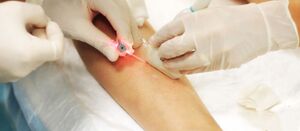
Laser sclerosis and coagulation are minimally invasive techniques to remove veins from the bloodstream. They are used for small diameters of varicose veins in the early stages of varicose veins (when exiting the spider, retic veins).
Laser endovasal coagulation of varicose veins
Veinectomy
Veinectomy is indicated in the third stage of the disease, accompanied by nutritional ulcers and complications. In some cases, varicose veins in vacuum develop according to the pattern presented in the step-by-step classification. For example, early-stage symptoms may be completely absent: decompensated visual appearance immediately develops.
Or, as the disease progresses, some signs of varicose veins are not added to the previous stage symptoms but disappear. Therefore, at the beginning of the 21st century, Russian venomists, in addition to the stepwise approach, adopted the international classification (CEAP), in which, when diagnosing the severity of the disease, the datathe individual characteristics of varicose veins and the effect of treatment are taken into account.
Symptoms
Medical symptoms at the onset of varicose veins do not make people think of varicose veins:
- feeling heavy in the leg;
- tired after walking.
They tend to be related to flat feet, unusual high heels, uncomfortable new shoes, lumbar necrosis.
And only visually detected purple varicose veins under the skin raised suspicions about the development of varicose veins.

Vascular mesh is the first sign of varicose veins appearing most often below the knee
Women see a doctor when they notice an unpleasant aesthetic defect in the form of a red "spider" of red veins on the legs, under the knees, on the skin of the thighs.
"The" line "of young women seeking treatment to a vein doctor specializing in venous diseases is often associated with the upcoming summer beach season, looking after appearance rather than health. With the help of drugs, they want to restore the beauty of the skin on their feet.
Pregnant women pay more attention to their condition. In addition to the changes in terms of aesthetics, they also noted that walking difficulties and increased fatigue at night.
An early stage of the disease is manifested by the disappearance of clinical symptoms after lying down.
You can ensure yourself by doing this experiment: measure the volume of your lower leg at the level of your ankle or calf muscle morning and evening after work. If a difference of more than 1 cm is the initial sign of varicose veins.
Appears after that:
- foot pain;
- swelling of the legs;
- a feeling of fullness and weight in the legs;
- muscle cramps at night; Dilated veins
- become dense "solid" threads with darker skin.
These signs are definitely a manifestation of varicose veins and should be treated.
The main causes of varicose veins in women
Fatigue and edema can be the first manifestation of venous blood flow disorders
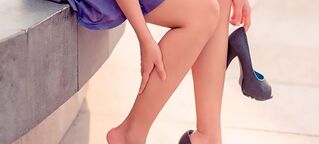
The sex hormone estrogen plays a special role in the development of varicose veins in women. Its action leads to troubles like weight gain, depression, swelling, drowsiness, dry mucous membranes. This hormone increases the permeability of small vessels. Fluid leaves the bloodstream more easily, bleeding less. Excess fluid builds up in surrounding tissues. These factors contribute to the development of stagnation in the vessels of the lower extremities.
Reasons for increasing estrogen in women:
- An imbalance in estrogen-progesterone production. It occurs due to a decrease in progesterone levels in the female body;
- Chronic stress. During stress, the body produces cortisol, thereby inhibiting progesterone synthesis;
- Pregnant. During pregnancy, the amount of estrogen in a woman's body increases;
- Use birth control pills. Varicose veins occur as a side effect of taking these drugs;
- Liver disease, where the liver removes estrogen from the body. With its poor function, this hormone accumulates in the body;
- Changes in hormone levels due to age also lead to an imbalance of sex hormones with the predominant component of estrogen.
Separately, it is important to note the reasons that lead to the development of varicose veins due to being overweight and a genetic predisposition to the disease. If being overweight can and should be fought for the good of the general health, then genetic predisposition cannot be prevented. As a result of these factors, varicose veins have become significantly "rejuvenated" and are now more common in girls 16-20 years old.
Adequate liver function is crucial to maintaining normal hormone levels. In addition to removing excess hormones, it participates in the synthesis of substances - precursors of progesterone and estrogen. In order to improve one's work, good physical performance, good nutrition and minimizing the introduction of harmful substances into the body are necessary.
Treatment of varicose veins with oriental medicine
Treating varicose veins with drugs is the most effective way, suitable for most patients. A wide range of medications allows you to choose a drug more suitable for long-term treatment.
A remedy for varicose leg varicose veins
Venotonics is the most effective drug for treating this disease. Venotonics are drugs that help increase venous tone and better blood flow out of the veins.
These pills can prevent the formation of characteristic nodules and veins.
Applying the ointment
The best treatment for varicose leg varicose legs is an integrated approach, which includes medication in the form of tablets, as well as using gels and ointments to treat outside of problem areas.
Varicose leg ointments also help improve blood flow and prevent the formation of blood clots.
These funds are only recommended after consulting a doctor, who will also determine the duration of treatment and the regime of use.
Do not self-medicate - this may further harm a patient's already poor condition.
Consequences of varicose veins.
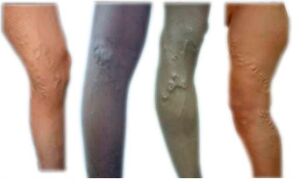
Varicose veins can lead to the development of nutritional foot ulcers, thrombosis in the varicose vein system, thrombophlebitis, pulmonary embolism (immediate death) when apparentlycompletely healthy.
Complex stages of varicose veins requiring surgical intervention. Although women most often suffer from varicose veins, men are also affected by it, mainly due to genetics.
A man under 40 can appear on the operating table, and radical measures are used to cure varicose veins for him - the diseased veins are removed.
Getting rid of varicose veins very easily.
In the groin, the surgeon makes an incision, where the large hemispherical vein is affected by varicose veins flowing into the thigh vein. The veins are exposed, tied and removed, and a second incision is made in the ankle. With the help of a special metal probe, inserted into the lumen, the entire enlarged vein is removed.
In the future, with the technology working correctly, no recurrence is observed. The blood supply to the legs was distributed to other vessels, and after 2 weeks everything was completely restored.
Risk factors leading to the development of varicose veins.
- Genetics and pathology of connective tissue;
- Female;
- Take hormonal drugs: progesterone, estrogen;
- Pregnant;
- Age: more common after 50;
- Overweight and sedentary;
- Long standing posture (standing work: hairdresser, sales staff, teachers, etc. );
- Obesity.
Symptoms and signs of varicose veins and chronic venous insufficiency.
| Symptoms of varicose veins | External sign |
| Pain | Telangiectasia |
| Heavy feet | Mesh veins |
| Fatigue | Varicose veins |
| Puffiness | Thrombophlebitis |
| Itchy skin | Hyperpigmentation |
| Discomfort in the legs | Bleeding from trauma |
| Calf muscle cramps | Ulcers |
Varicose Varicose Treatment Options.
The choice of treatment depends on the diameter and type of varicose veins
- Saphenous varicose veins
- Drug treatment
- Elastic compression and leg bandages
- Parenteral therapy
- Foam therapy
- Laser therapy
- Cut small strings
Dear women, varicose veins can wrap you in long skirts and pants forever. If the pills and ointments cannot bring your legs back to normal, the only sure way to get rid of the dilated veins remains. How and where, it is only after consulting with a vein specialist. The existing veins can be treated with surgery without hospitalization, without anesthesia, without incisions with high precision. You only need to take one step towards your health.
Detailed information about varicose veins, symptoms, prevention methods, special exercises, treatment methods and necessary nutrition can be found on the website: ovaricoze. ru
How varicose veins manifest in the early stage. Why is he dangerous
As a rule, reticular varicose veins do not cause pain. Therefore, the most frequent complaints that patients seek to see a doctor are cosmetic defects - mesh veins that are visible.
In more rare cases, the appearance of varicose veins is accompanied by a burning sensation or other changes in skin sensitivity.
In addition to these symptoms, the early stages of varicose veins present:
- heavy in the legs;
- increased leg fatigue;
- cramps in the muscles of the lower extremities, especially at night;
- itching at the site of the vascular network;
- edema of the feet and legs.
In order to prevent disease progression, timely treatment is required
Therefore, it is important to consult a vein doctor, vascular doctor or vascular surgeon promptly, they will tell you what to do with skin shapes likeso. To begin with, the therapist will conduct examinations and prescribe the necessary additional tests to help identify the cause of the asterisks or mesh appearance, as well as determine the extent of impaired circulation. intravenous
To determine the extent of blood vessel damage and their impairment do:
- complete blood count (indicates whether the patient has anemia or thrombocytopenia);
- biochemical blood test (detect blood clotting disorders or liver and kidney function);
- general urine analysis (detects kidney problems);
- ultrasound of blood vessels - double angiography (shows pathology of the vessel wall and disturbances in blood flow);
- X-ray phlebography with contrast (determine the location of venous lesions and the degree of their impairment).
If you do nothing after discovering the first signs of reticular varicose veins, it could be:
- the entry of inflammation and the development of thrombophlebitis of the superficial veins of the lower extremities;
- transitions the pathological process from the superficial veins of the lower extremities to the deep vein;
- thrombosis of venous blood vessels. If thrombosis occurs in the veins of the head, it is dangerous for stroke and sinus thrombosis;
- pulmonary thrombosis is a fatal complication that occurs due to the separation of the clot from the artery wall and blockage of the lumen of the pulmonary artery.
If you ignore the emergence of new reticular varicose veins and do not initiate treatment in time, the disease will progress. After that, the development of complications becomes inevitable.
Precautions
Don't forget the precautions. To prevent illness, you need to make time for sports.
Avoid exertion. Wear comfortable shoes with low heels (up to 4 cm). Remember that hot showers, baths and saunas have negative effects on the health of your feet.
And following these simple instructions will help prevent the development of this disease:
- tries to get rid of bad habits - drinking and smoking negatively affects the state of your blood vessels; Compression therapy
- - wearing medical socks, tights and knee-high;
- diet, control weight (overweight people are prone to varicose veins), exclude fatty meats and poultry, give up spicy and salty foods, make sure vegetables and fruits are included in the dietEating; Massage
- - practice the habit of gentle foot massage after a tiring working day, this will help you relax and improve the body's natural blood circulation.
Any disease is easier to prevent than cure. Be healthy!












































